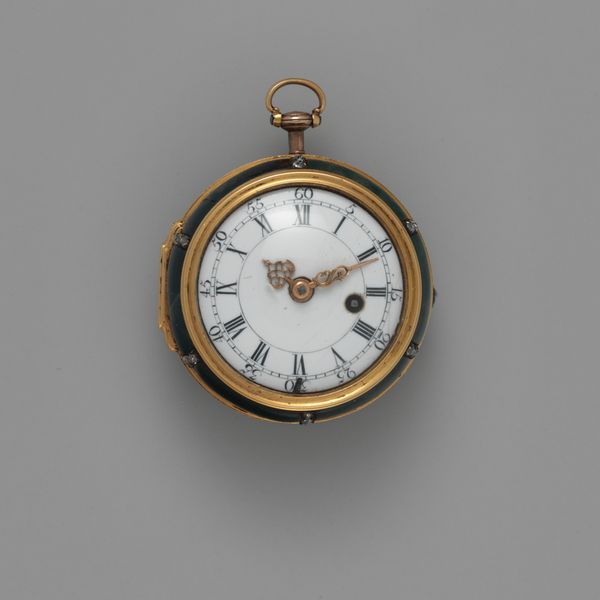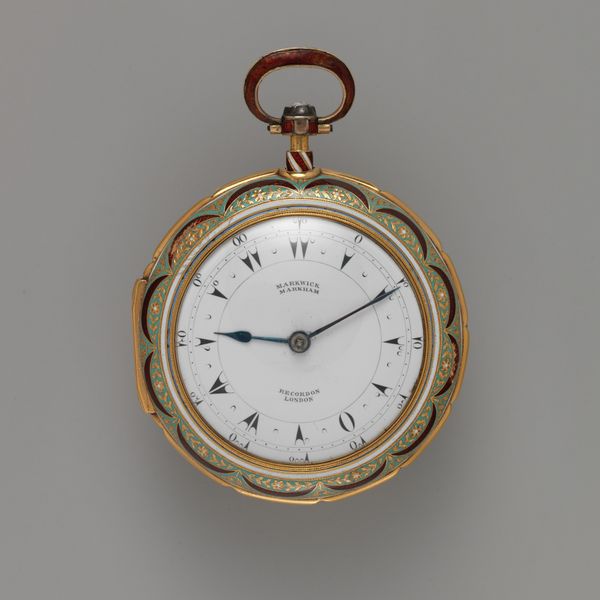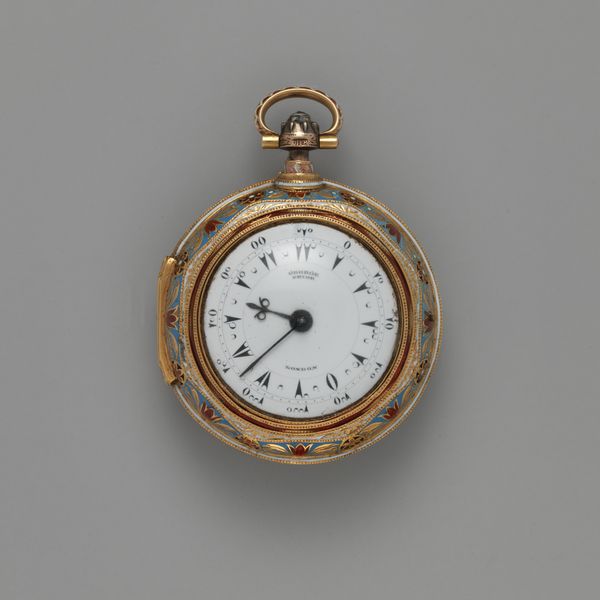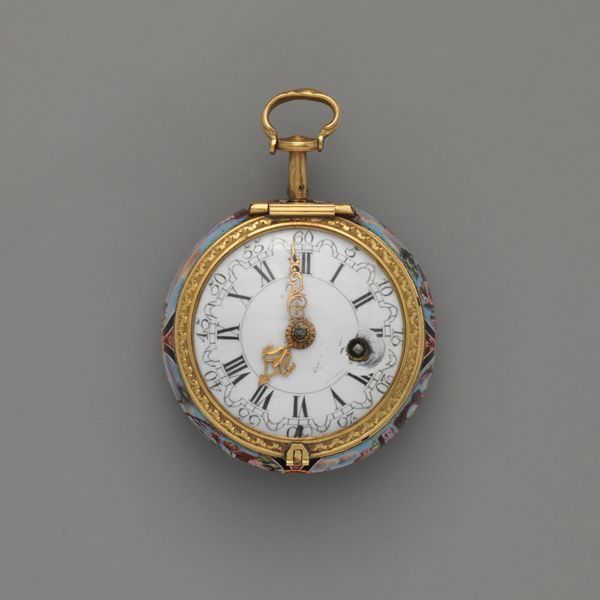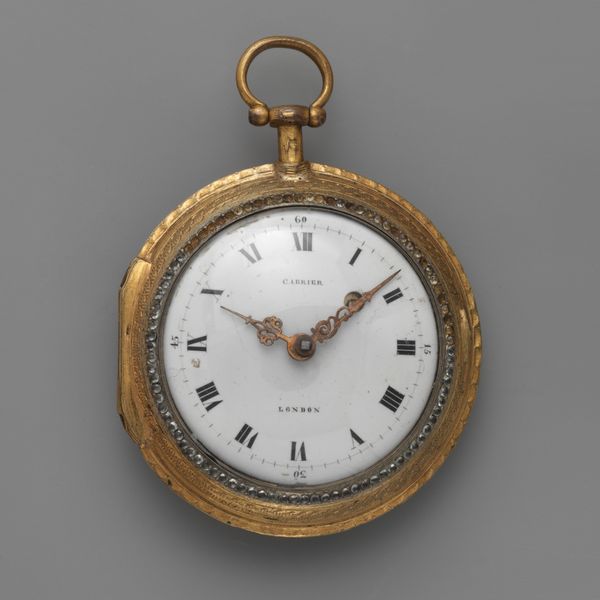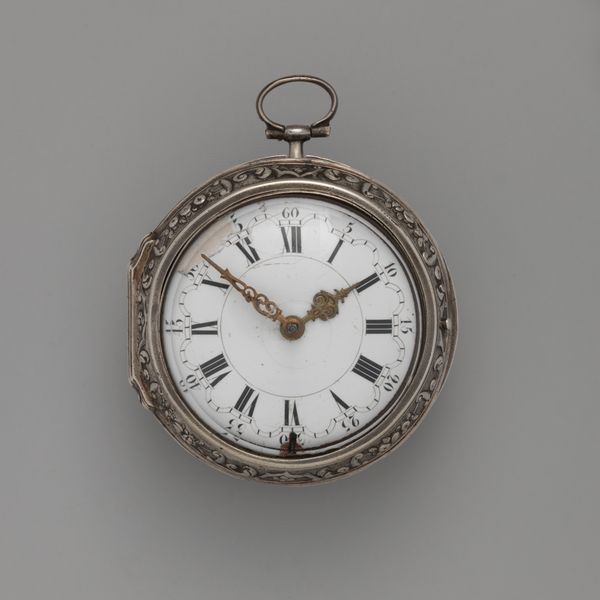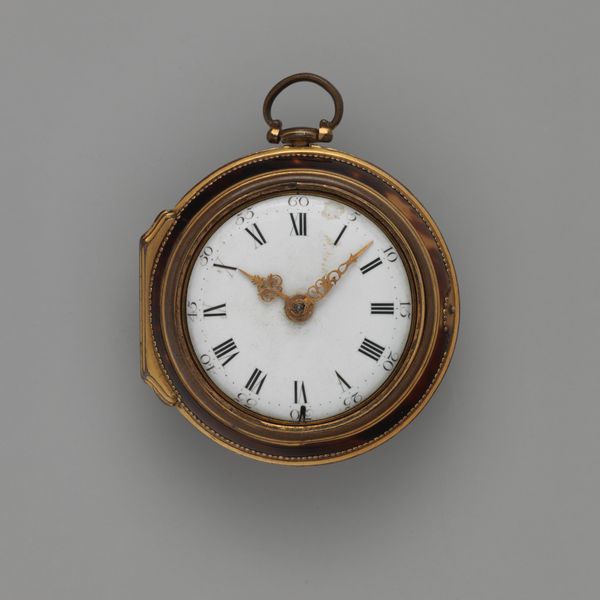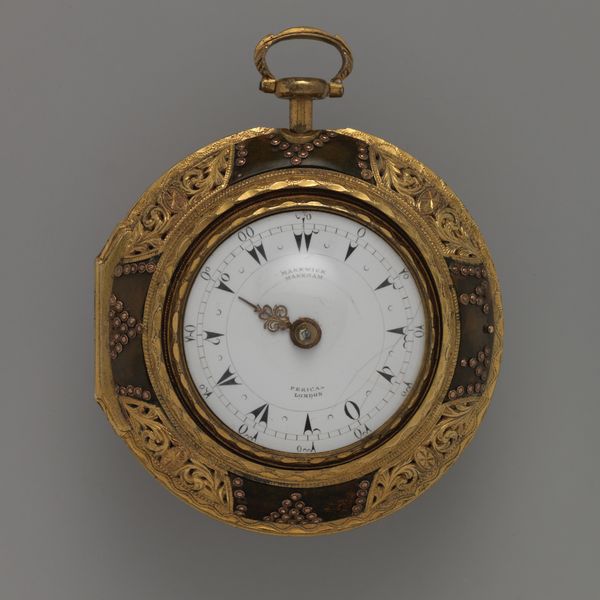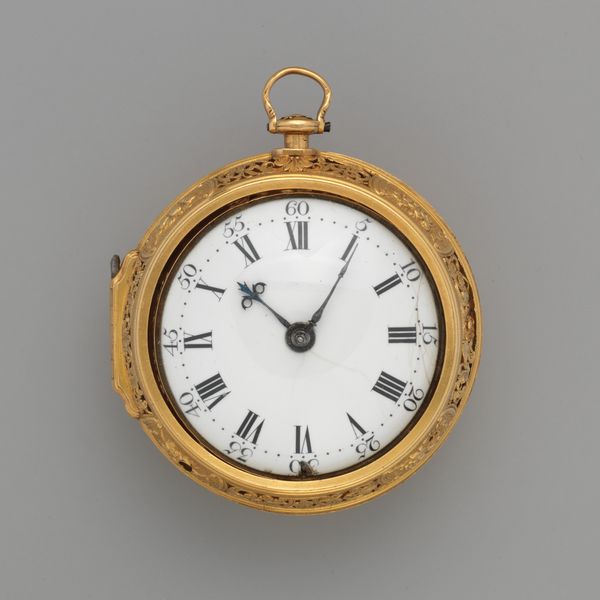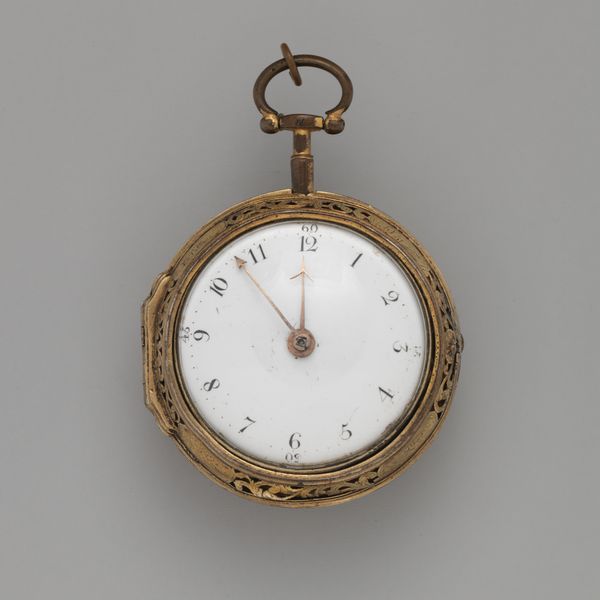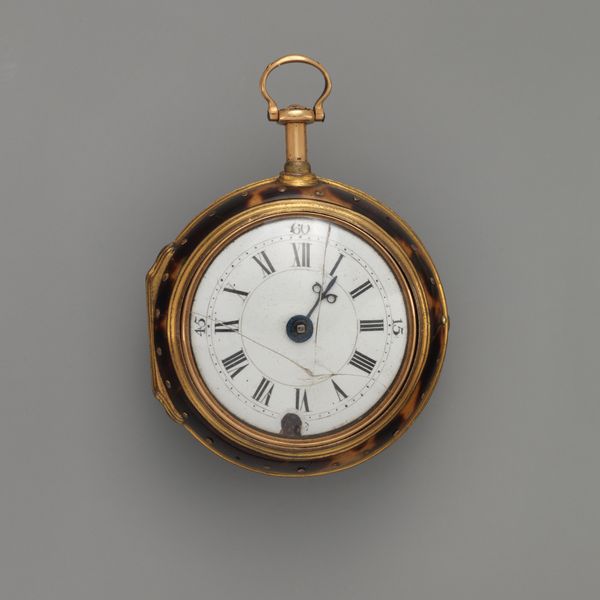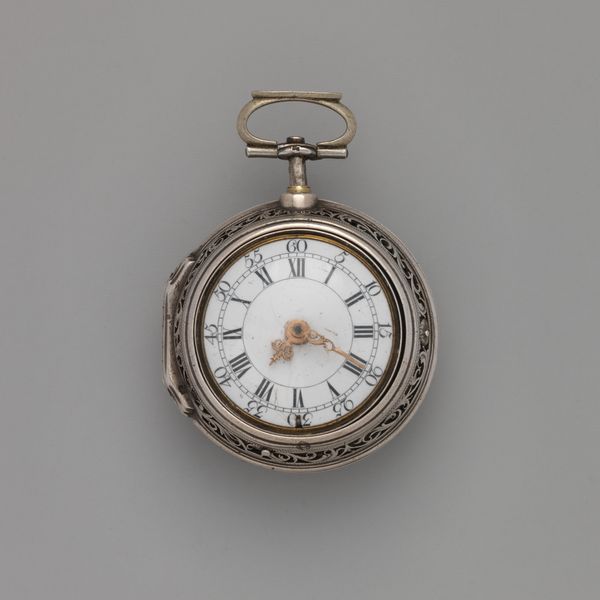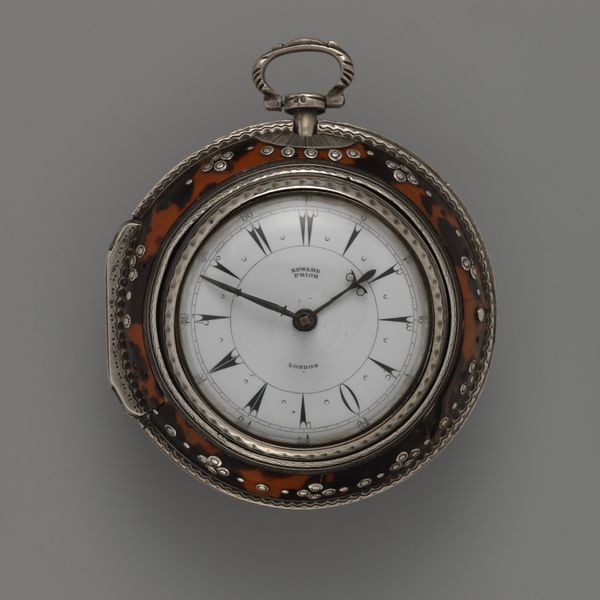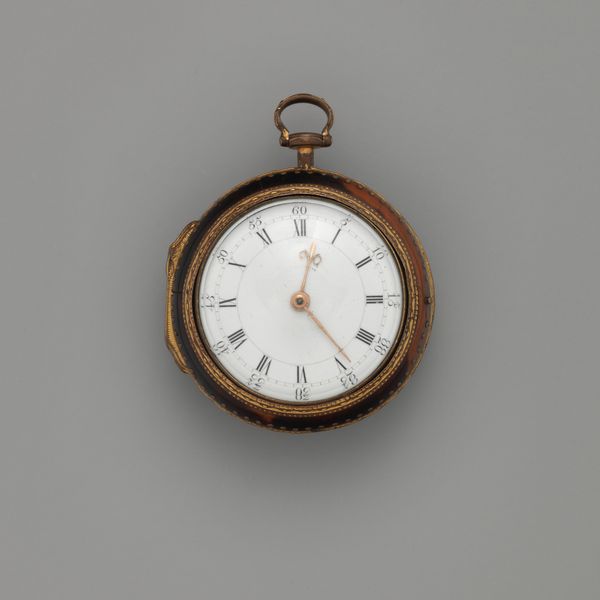
metal, gold, sculpture
#
metal
#
gold
#
sculpture
#
decorative-art
#
rococo
Dimensions: Overall (confirmed): 2 1/8 × 1 5/8 × 1 in. (5.5 × 4.1 × 2.6 cm)
Copyright: Public Domain
Curator: Take a moment to observe "Watch," a striking piece from around 1745-1755, currently held at the Metropolitan Museum of Art. This beautiful sculpture, primarily fashioned from gold and other metals, exemplifies decorative art of the Rococo period. Editor: The first thing that strikes me is the opulence – the gleaming gold, the intricate details. It's more than a timepiece; it’s a status symbol, a proclamation. I wonder what it would be like to see someone pulling this from a waistcoat pocket. Curator: Precisely! Think about the social dynamics at play. A piece like this would have been wielded as a symbol of power within the rigid class structures of 18th-century Europe. Who would have had access to something this ornate, and what did it signify? Editor: Visually, the surrounding gems are immediately striking. They almost seem to absorb and refract light, directing your attention to the gilded movement. We associate these materials and colors, with themes of prestige and importance; What symbolic connotations might that combination trigger today? Curator: I agree that its appeal still works today. It makes you question who possessed this artifact and what kind of social and political narratives it was entwined in, in that period? Were these timepieces primarily reserved for the elite, subtly underscoring temporal inequalities? Editor: That reminds me of older ideas that connect time with immortality. The circle that composes this object also suggests ideas of continuity, similar to ancient religious or mythological imagery of Ouroboros. Do you think that those potential echoes gave this particular piece special power? Curator: Yes, you are correct. What is even more crucial, is investigating the context in which its visual lexicon acquired meanings—gendered expectations of those in power, notions of wealth. When observing such objects we must analyze how they uphold societal hierarchies. Editor: Certainly a tiny world unto itself. To me, it reflects how humans perceive not only time but their very standing in society. Curator: A compelling reminder that these ornate objects reveal much more than merely "the time". It mirrors the socio-political times during its creation. Editor: This has made me really think about how objects transcend being mere decorative tools, transforming into concentrated cultural narratives that span throughout time.
Comments
No comments
Be the first to comment and join the conversation on the ultimate creative platform.
